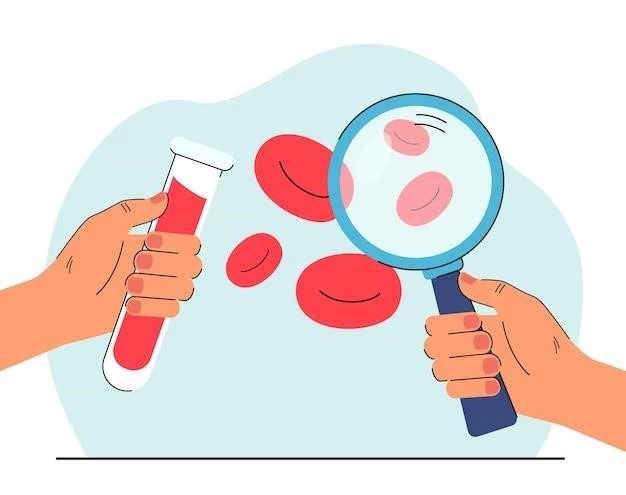Understanding Hematocolpos
Welcome to this article focusing on the condition known as Hematocolpos. Here, we will delve into the causes, symptoms, diagnosis, and treatment options available for individuals affected by this congenital anomaly. Stay tuned for valuable insights into managing this condition effectively!
Introduction to Hematocolpos

Hematocolpos is a rare condition characterized by the accumulation of menstrual blood in the vagina and uterus due to an obstruction in the genital tract. This problem typically arises from an imperforate hymen, a condition where the hymen completely obstructs the vaginal opening, leading to the retention of blood.
Individuals with Hematocolpos may experience symptoms such as cyclic pelvic pain, abdominal discomfort, and a sensation of pelvic fullness during menstruation. It is crucial to seek medical attention if you suspect you may have Hematocolpos as timely diagnosis and intervention are essential for managing this condition.
Some cases of Hematocolpos can be associated with underlying conditions like endometriosis, where the tissue similar to the lining of the uterus grows outside the uterus; Surgical intervention may be necessary to address the underlying cause of the obstruction and alleviate symptoms associated with Hematocolpos. Understanding this condition is key to receiving appropriate care and improving your quality of life.
Menstruation and the Genital Tract
Menstruation, the monthly shedding of the uterine lining, is a normal part of a person’s menstrual cycle. In the case of Hematocolpos, an obstruction in the genital tract prevents the normal flow of menstrual blood out of the body. This blockage can lead to the accumulation of blood in the vagina and uterus, causing discomfort and pain.
Understanding how menstruation typically occurs can help individuals recognize when there may be an issue with the flow of menstrual blood. It is essential to be aware of any abnormal pelvic pain, bloating, or pressure during menstruation, as these could be indicators of a condition like Hematocolpos.
If you experience persistent pelvic pain during menstruation or have concerns about the flow of blood, consult a healthcare provider for an evaluation. Prompt diagnosis and appropriate management can help address any underlying issues affecting the genital tract and menstrual health, leading to improved overall well-being.
Obstruction in Hematocolpos
In Hematocolpos, an obstruction in the genital tract, often caused by an imperforate hymen, hinders the normal drainage of menstrual blood from the vagina and uterus. This obstruction results in the accumulation of blood, leading to discomfort, pain, and potential complications if left untreated.
It is crucial to understand the role of the hymen in this condition, as a completely closed hymenal opening prevents the blood from exiting the body during menstruation. This blockage can present challenges for individuals experiencing symptoms such as pelvic pressure, cramping, and difficulty with menstruation.
If you suspect you have an obstruction in your genital tract causing Hematocolpos, seek prompt medical attention. Healthcare providers can diagnose the underlying cause of the obstruction and recommend appropriate treatment options, which may include surgical intervention to correct the issue and alleviate symptoms associated with Hematocolpos.
Hymen and Retained Blood
The hymen, a thin membrane that partially covers the opening of the vagina, plays a crucial role in menstruation. In cases of Hematocolpos, an imperforate hymen completely obstructs the vaginal opening, leading to the retention of menstrual blood in the vagina and uterus.
Individuals with an imperforate hymen may experience symptoms such as cyclic pelvic pain, abdominal bloating, and difficulty with menstruation due to the inability of the blood to flow out of the body. Recognizing these signs is essential for early detection and management of Hematocolpos.
If you suspect that an imperforate hymen is causing retained blood in your genital tract, it is important to consult a healthcare provider for a proper evaluation and diagnosis. Treatment options, including surgical intervention to correct the obstruction, can help address the underlying issue and relieve symptoms associated with Hematocolpos.
Symptoms and Diagnosis of Hematocolpos
Recognizing the symptoms of Hematocolpos is crucial for early intervention and management of this condition. Common signs may include cyclic pelvic pain, abdominal discomfort, bloating, and difficulty with passing menstrual blood. If you experience any of these symptoms, seek medical attention promptly for further evaluation.
Diagnosing Hematocolpos typically involves a physical examination, where a healthcare provider may identify signs of an obstructed genital tract. Imaging studies, such as ultrasound or MRI, can help visualize the extent of the obstruction and confirm the presence of retained blood. In some cases, a minor surgical procedure may be needed for a definitive diagnosis.
It is important to communicate openly with your healthcare provider about your symptoms and menstrual history to aid in the accurate diagnosis of Hematocolpos. Early detection allows for timely intervention and the initiation of appropriate treatment to address the underlying cause of the obstruction and improve your quality of life.
Treatment Options for Hematocolpos
Managing Hematocolpos often involves addressing the underlying obstruction in the genital tract to alleviate symptoms and prevent complications. The primary treatment for this condition typically relies on surgical intervention to correct the obstruction and allow for the proper drainage of menstrual blood.
During the surgical procedure, the healthcare team will focus on creating a functional opening in the hymen to restore the normal flow of blood during menstruation. This intervention aims to relieve symptoms such as pelvic pain, bloating, and pressure, ultimately improving the individual’s quality of life.
After the surgical correction of Hematocolpos, post-operative care and follow-up visits with healthcare providers are essential to monitor recovery and address any concerns. It is crucial to adhere to post-operative instructions and attend scheduled appointments to ensure optimal healing and long-term well-being.
Consult with your healthcare provider to discuss the most suitable treatment approach for managing Hematocolpos based on your individual needs and circumstances. By seeking timely intervention and following through with the recommended treatment plan, you can effectively address Hematocolpos and promote your overall health and wellness.
